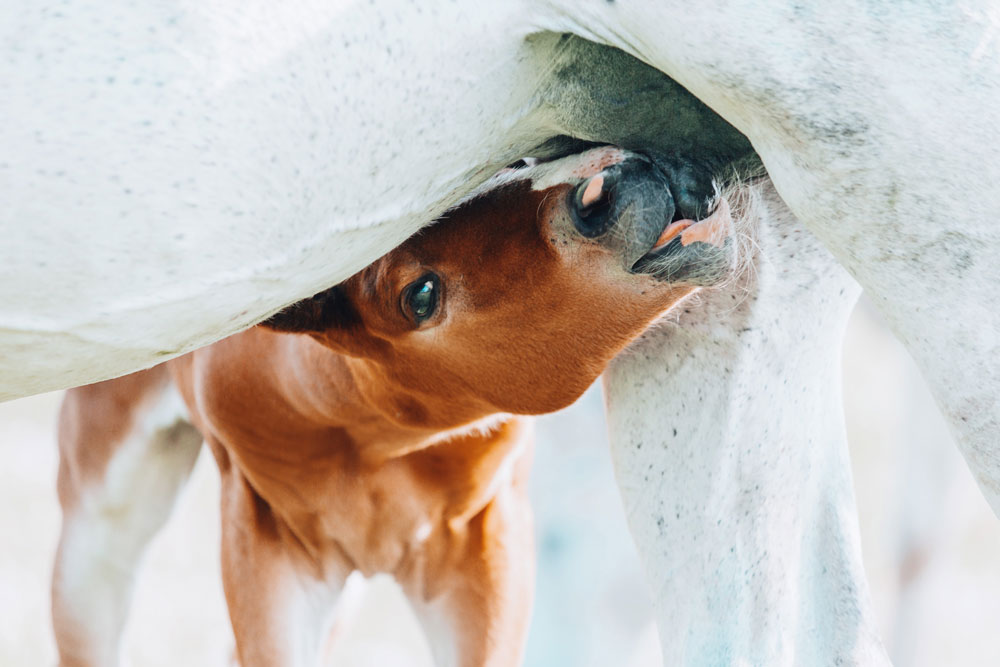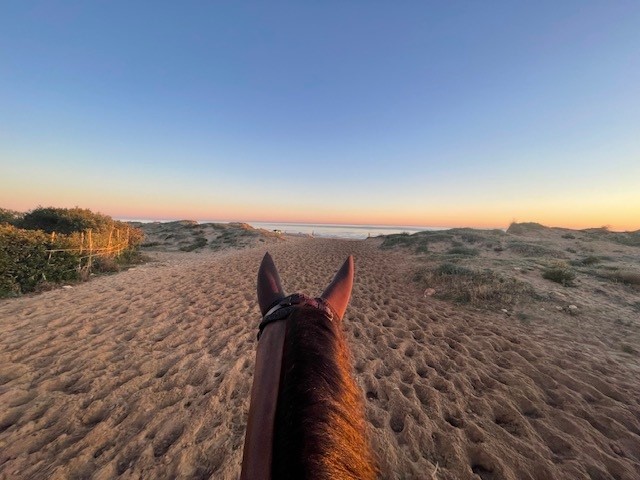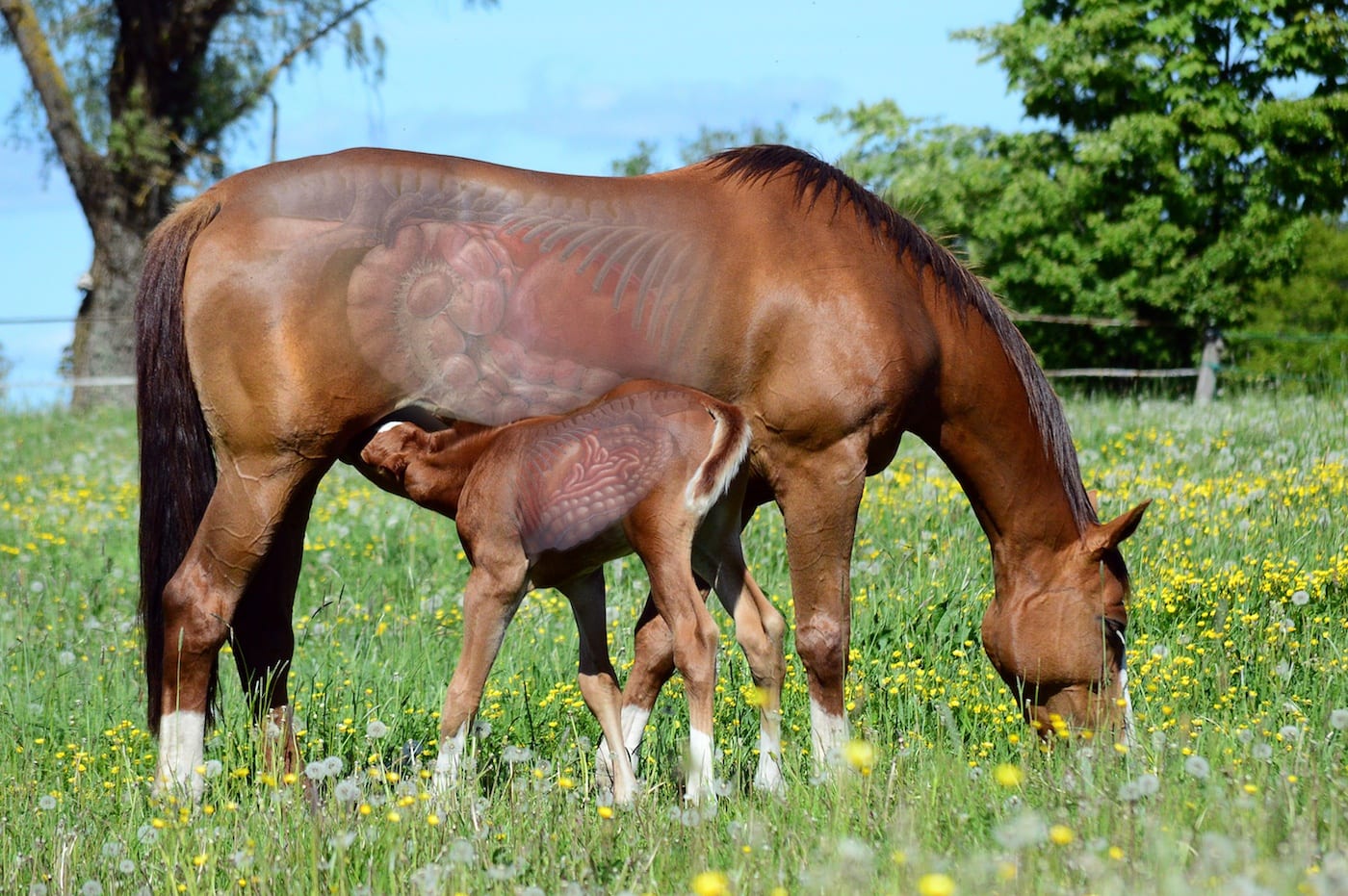Many horse owners have a daily routine that looks something like this: Feed one scoop of grain and two flakes of hay at 6 am. Ride at 8. Turn out from 2-4 pm (if it’s nice weather). Feed one scoop of grain and two flakes of hay at 5 pm. Leave the barn feeling confident that your horse’s nutritional needs have been met. Repeat indefinitely.
This schedule of feeding is pretty common, but it’s
a myth that your horse’s nutritional needs — including its need for fiber — have been met through two scoops of feed and a few flakes of hay. The two-hour turnout in the above example helps boost fiber (if there’s quality grass to graze on) — but two flakes and two hours aren’t nearly enough for optimal digestive health.
Why Horses Need Fiber
Fiber is essential for herbivores like horses. For proof, look at the horse’s natural diet: slow, constant grazing on grass that provides a steady supply of nutrients and lots of fiber. Ultimately, all of us should strive to emulate that model for our horses. Instead, we’ve adjusted what we think of as a “normal” horse diet primarily to meet our own needs. Most of us have found that it’s easier to feed a horse twice a day and be done with it — but this new “normal” isn’t healthy for your horse.
Forage isn’t optional in a horse’s diet: horses depend on fiber for up to 70 percent of their energy needs. Horses don’t have any natural enzymes for digesting plant fiber, so they rely on a significant population of bacteria in their cecum to ferment fiber. The product of this fermentation process is volatile fatty acids, along with micronutrients, that give horses energy for riding, jumping, driving — or just plain being horses! In addition, horses require fiber to keep their digestive systems functioning properly.
When fiber is replaced by concentrates (feed), it passes too quickly through the stomach and reaches the hindgut, where the simple carbohydrates (sugars and starches) are fermented into lactic acid — leading to an
inefficient or compromised digestive system.
How Much Fiber Do Horses Need?
Fiber should make up between 50-100 percent of the equine diet, and horses should consume at least 1.5% to 2% of their body weight in forage daily. Horses that are not in active training can often thrive on a diet that’s 100 percent forage; growing horses or those in strenuous training will probably need additional fuel from feed. Most horses in light training get all of the fiber they need simply by grazing slowly and steadily in a pasture filled with high-quality grasses.
How Horses Get Fiber
Pasture grasses and hay are the best sources of fiber for horses. The fiber content of hay fluctuates according to the environment, time of year, soil and stage of growth. Hay that’s gone to seed is at the very bottom of the nutritional chart. A
hay analysis is available through your local agricultural extension and can provide the most thorough analysis of nutrition.
What to Do if Your Horse isn’t Turned Out All Day
In an ideal world, our horses would be turned out on top-quality pasture grasses 24/7 — but that isn’t realistic for most of us. Instead, try feeding free-choice hay to increase fiber, and try feeding beet pulp in shredded or pellet form.
Feeding chaff —chopped hay — is another way to increase fiber. And yes, feeding chopped hay is essentially the same as feeding a flake of hay, but replacing some (or all!) of a horse’s grain ration with chaff is an excellent way to increase saliva, slow the intake of grain, and improve digestion. Grain hulls, the exterior shell from cereal grains, are another option to help
bulk up a horse’s fiber intake, but are no real substitution for the kind of fiber found in pasture grasses and other roughage.
SUCCEED can also help horses that can’t be turned out for adequate time each day, or that require grain-based feed. One serving of SUCCEED once a day with your horse’s regular feed supports key components of your horse’s digestive system to
promote good digestive health, thanks to a
unique nutrient blend designed to support the entire digestive tract.
Sign up for the SUCCEED Challenge to give it a try.
Fiber Isn’t Optional
Horses can’t survive without fiber — and lots of it. Need proof? Look at their broad, flat teeth. They’re perfectly suited to grinding fibrous materials. Need further proof? We can bet you’ve never met a horse that lives out in the pasture constantly who overdosed on grass.
Forage is horses’ best source of energy, so it’s a MYTH that two small flakes of hay alone can provide enough fiber to keep a 1,000-lb-plus animal going.





